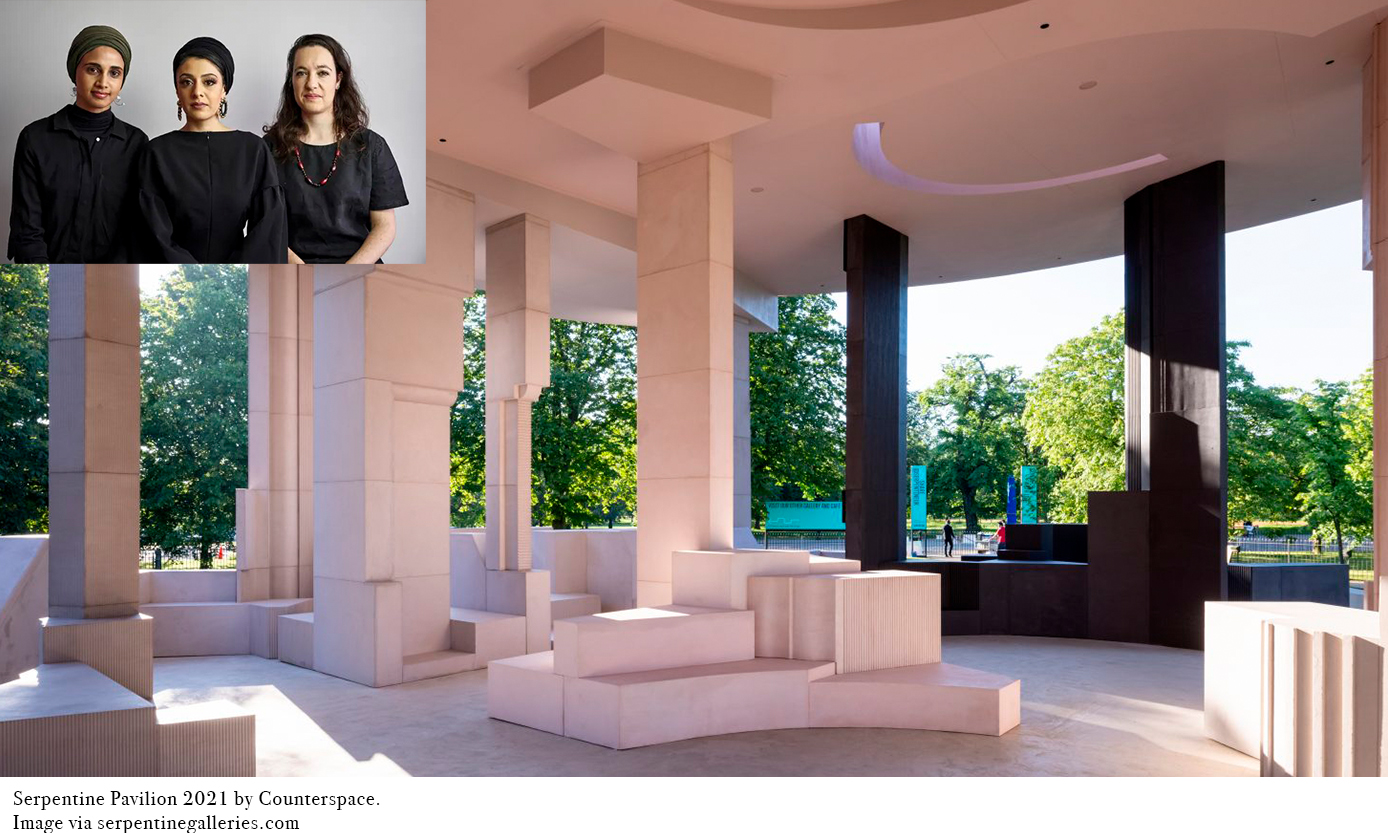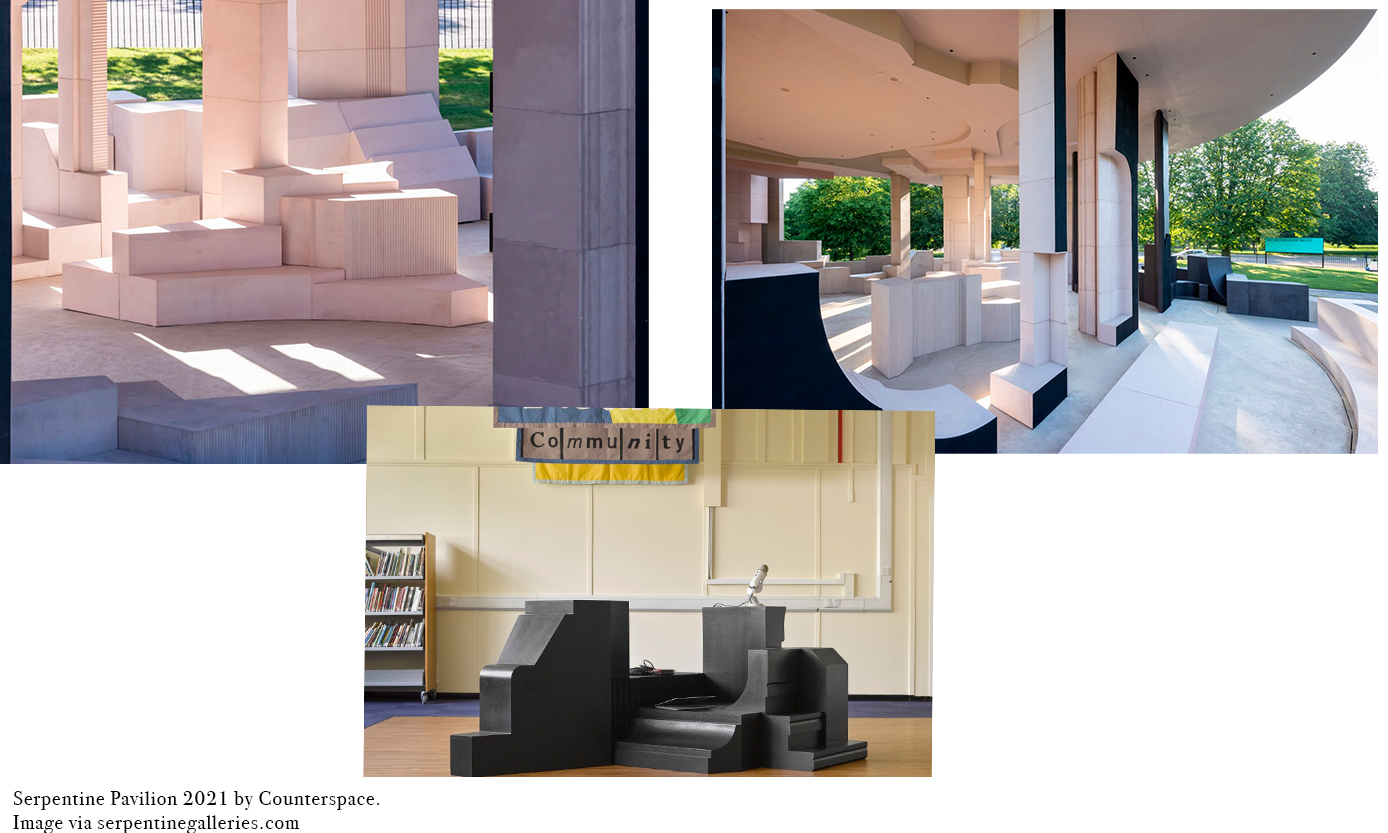
An Open Dialogue Between the Interior and The Exterior in the New Serpentine Gallery’s Pavilion
By Sybaris
The Serpentine Gallery’s Pavilion is one of the most important visits in the world. On this occasion the authors of the ephemeral structure that is build during the summer are Counterspace (Sumayya Vally, Sarah de Villiers and Amina Kaskar), the youngest architectural firm in history to present an installation on the Serpentine.
In the words of The Guardian architecture critic Rowan Moore, the piece “At one Level, is simple, a large, almost circular ceiling supported on pillars. It is a refuge in the park, which makes it a place for events and meetings. It has no walls, so the inside and outside flow into each other, and you can see trees through and from it. It also has its own distinctive range of atmospheres: calm, gloomy, a touch cooler. The outer surfaces are black, the inner ones in gradations of gray, which makes the progression from the outside to the inside superior. This creates a feeling of the interior as a separate place.”
In addition to reflecting on indoor and outdoor spaces and the ability of technology to create new user experiences, Counterspace uses materials from recycled construction and demolition waste in this installation. Due to the pandemic, for the only occasion, the Serpentine Gallery extended the construction of the Pavilion to 2 years: the piece by Vally, De Villiers and Kaskar was planned during 2020 and built in 2021.
What makes this installation different from previous ones? Due to the research time that Counterspace had for the construction, the South African firm decided to distribute some fragments of the piece in the Pavilion. But these fragments can also be seen in different parts of London, as if the Pavilion had developed limbs. It is very likely that we will see more ideas similar to this in the future.




